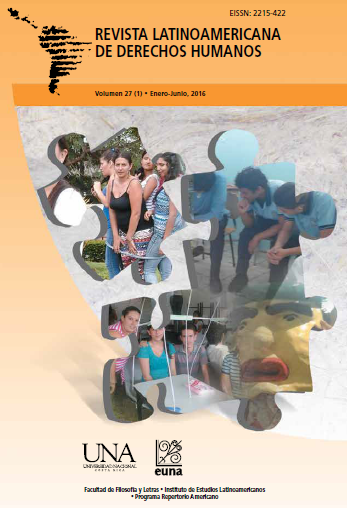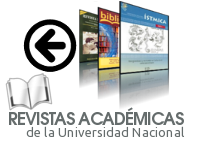Cultural Identity Concepts of US Hispanic Students
DOI:
https://doi.org/10.15359/rldh.27-1.5Keywords:
The right to cultural identity, United States Hispanics, rebuilding dignity and belongingAbstract
This article presents a reflection on the right to cultural identity, a concept that currently generates considerations beyond the territorial and temporal while emphasizing specific characteristics of differentiation. It discusses the concepts of cultural identity as a right of US Hispanic students and the close relationship of the heritage language to cultural identity. In addition, the article presents the concepts of reconstruction of dignity as well as the concept of belonging related to cultural identity provided directly from the voices of US Hispanic high school students. In this process, strengthening the heritage language plays an indispensable role.
References
Bada, X., & Mendoza, c. (2013). Estrategias organizativas y prácticas cívicas binacionales
de asociaciones de mexicanos en Chicago: Una perspectiva transnacional desde el lugar. Migraciones internacionales, 7(1) 35-67.
Bush, G. W. (2001). No child left behind. Recuperado de http://files.eric.ed.gov/fulltext/ED447608.pdf
Côté, J. E., &Levine, C. G. (2014). Identity, formation, agency, and culture: A social
psychological synthesis. New Jersey: Psychology Press.
Carreira, M. y Kagan, O. (2011). The results of the national heritage language survey:
implications for teaching, curriculum design, and professional development. Foreign
LanguageAnnals, 44, 40-64.
Garrido Palacio, Manuel. (2010). “Hispanounidense” o cómo nace una palabra. Entrevista a
Gerardo Piña-Rosales. (9 de abril, 2010). Recuperado de
www.fundeu.es/noticia/ hispanounidense-o-como-nace-una-palabra-2768/
Glaser, B. G. (2014). Applying grounded theory. The Grounded Theory Review, (1),
(Cuarto artículo). Recuperado de http://groundedtheoryreview.com/
González, C. (2012). Identidad, alteridad y comunicación, definiciones y relaciones. Signo
y pensamiento, 16(30), 77-84.
i Mimó, O. R. (1997). Declaración universal de los derechos lingüísticos. Revista
Iberoamericana de Educación, 13, 281-289.
Leeman, J., Rabin, L., & Román-Mendoza, E.(2011). Identity and activism in heritage
language education. The Modern Language Journal, 95(4), 481-495.
Monge, V. (2015). Una teoría fundamentada (Grounded Theory) de las responsabilidad de
los estudiantes de secundaria (9) a 12) grado) de un colegio del Distrito Escolar
Unificado de SegundaEnseñanza East Side (East Side Union High School District),
San Jose, California, EE.UU, años académicos 2011-2012, 2012-2013 (tesis
doctoral).Universidad Estatal a Distancia, UNED. San José, Costa Rica.
Paz, O. (2011). El laberinto de la soledad. Madrid: Cátedra.
Pew Hispanic Center. (2009). Between two worlds. How young Latinos come of age in
America. Recuperado de http://www.pewhispanic.org/files/reports/117.pdf
Pufahl, I., & Rhodes, N. C. (2011). Foreign language instruction in U. S. schools: Results
of a national survey of elementary and secondary schools. Foreign Language Annals,
(2), 258-288.
The College Board.(2015). AP Central.AP Spanish Language and Culture.Recuperado de
http://apcentral.collegeboard.com/home
U.S. Census Bureau. (2010).The hispanic population 2010. Recuperado de
http://www.census.gov/2010census/data/2010-census-briefs.php
Downloads
Published
How to Cite
Issue
Section
License
El material que se publica en esta Revista está bajo una licencia “Creative Commons” 3.0 Costa Rica (CC, Reconocimiento-NoComercial-SinObraDerivada 3.0 Costa Rica (CC BY-NC-ND 3.0 CR) . Esto significa que el material publicado en la revista se puede compartir (copiar y distribuir) en cualquier medio o formato considerando que se debe reconocer de forma adecuada la autoría del material y la fuente, no puede utilizarse con fines comerciales y no se aceptan las obras derivadas (remezclar, transformar o crear a partir del material).








